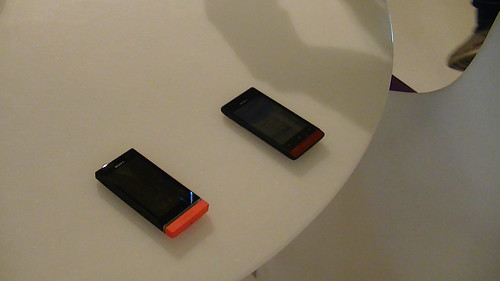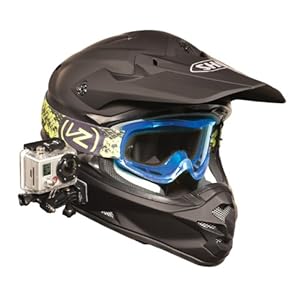Pill Camera Records Video of the Inside of Your Intestinal Tract
Wireless capsule endoscopy (WCE) is a relatively new and under utilized technology. It is under utilized due to limited insurance coverage for the test. Many people have heard about the so-called "camera pill" but do not know when it can or should be done, or how it works. Many mistakenly believe that it might be a substitute for colonoscopy, a flexible lighted tube with a camera on the tip used to examine the large intestine. Colonoscopy is recommended to screen for colon cancer and the precursor of colon cancer, colon polyps, as well as a diagnostic exam for evaluation of intestinal bleeding, diarrhea or lower abdominal pain. WCE is not yet technically feasible for examination of the lower or large intestine known as the colon. Given Imaging was the first to develop this technology.
Pill Camera Records Video of the Inside of Your Intestinal Tract

I Have Been Diagnosed With Type II Polio!
Tube. Duration : 5.75 Mins.
I Have Been Diagnosed With Type II Polio!
FAQ Video: bit.ly ~~ Jon's Adventure Vlog ~~ Whenever Jon ventures out into the world to do something exciting, he will take you along for the adventure! New episodes are posted sporadically, often in small bursts immediately following any traveling Jon does, so the schedule depends on when Jon actually goes on an adventure! Born in February 1986, Jonathan Paula is a professional YouTuber and creator of the hit web series, "Is It A Good Idea To Microwave This?". In April 2006 he founded Jogwheel Productions, a new media production company that specializes in web video. Jon graduated from Emerson College in 2008 with a degree in Television Production / Radio Broadcasting. He currently lives in Rockingham, NH with his wife Rebecca. ~~ Links ~~ Main Channel ----- bit.ly Twitter ---------------- bit.ly Facebook ----------- bit.ly The World ---------- bit.ly Game Time -------- bit.ly Movie Night -------- bit.ly FAQ Video --------- bit.ly T-Shirts -------------- bit.ly ~~ Technical ~~ Created by ------ Jonathan Paula Camera ---------- Panasonic DMC-FZ150 Software --------- Adobe Premiere Pro CS5 Computer ------- bit.ly • Jogwheel Productions © 2010 • ~
I Have Been Diagnosed With Type II Polio!
I Have Been Diagnosed With Type II Polio!

I Have Been Diagnosed With Type II Polio!
No URL I Have Been Diagnosed With Type II Polio!
Remotely View Your Home Security Cameras From an iPhone
Home security cameras have become popular over the last few years. These home security camera systems provide customers with the ability to record exactly what happens at their home and protect their property from vandalism and theft. However, this is only the basic features of a home security camera system. When selecting a camera system, you should be looking to find out what the advanced features of the system are, so that you can select a system that will grow with you and give additional peace of mind and protection.
Remotely View Your Home Security Cameras From an iPhone

BajheeraVlog - Crankin' Out Arena Vids :) - Warrior Guide + Bajquiqui on the way!:D
Tube. Duration : 10.47 Mins.
BajheeraVlog - Crankin' Out Arena Vids :) - Warrior Guide + Bajquiqui on the way!:D
Having so much fun making all these videos for you guys and I hope you don't feel like I'm spamming you :( GET SHIT ON (Fly) !!! BajheeraWoW's webcam video October 2, 2011 11:38 AM
BajheeraVlog - Crankin' Out Arena Vids :) - Warrior Guide + Bajquiqui on the way!:D
BajheeraVlog - Crankin' Out Arena Vids :) - Warrior Guide + Bajquiqui on the way!:D

BajheeraVlog - Crankin' Out Arena Vids :) - Warrior Guide + Bajquiqui on the way!:D
No URL BajheeraVlog - Crankin' Out Arena Vids :) - Warrior Guide + Bajquiqui on the way!:D
Keywords:

Some PC-Based home security camera systems and standalone DVR systems provide the ability to record from your cameras, and also remotely view over the internet. These systems connect to a DSL or Cable internet connection and provide the ability to view your cameras over the internet. Depending on the type of system, it may view directly through an internet explorer web browser, or it may have a remote client software that installs to allow remote viewing and playback. Remotely viewing your home security cameras provides you with the ability to always know what is happening at your home, so that you can have peace of mind that everything is ok. Remotely viewing cameras from a PC is becoming a more common feature of home security camera systems.
Video Camera
Remotely View Your Home Security Cameras From an iPhone
A few more advanced home security camera systems like our Alnet PC-Based DVR Systems and H.264 standalone DVR systems provide advanced remote viewing features that will even allow you to remotely record video to a PC over the internet. With these features, you can keep a backup of your video on another PC over the internet, so that if someone were to steal the DVR or DVR PC from your home, you would still have a copy of the video on an off-site location.
Remotely View Your Home Security Cameras From an iPhone
No URL
Beyond remote recording capabilities, a few home security camera systems also provide the ability to remotely view your security cameras from a PDA phone or even iPhone. There are two different types of remote viewing from an iPhone that may be available from your surveillance system. The first and most basic type of remote viewing from an iPhone is a web based application. This type of viewing uses the web browser and can give a basic view of what is happening on your cameras. It loads a JPG image from the cameras and then can refresh the page to update the image up to 1 time per second. With this remote viewing, you can view up to 4 cameras at a time, and is most popular with standalone DVR systems. The second, and more advanced remote viewing from an iPhone is an application that was designed specifically to communicate with your PC-Based DVR system. This type of system is more full-featured and can provide streaming live video, control of PTZ cameras, control of digital inputs and outputs, playback of pre-recorded video and even saving snapshots right onto your phone. These Alnet PC based systems provide the best features and functionality for iPhone users, and also have clients applications for other PDA phones like Android phones, Windows Mobile Phones, Blackberry phones and more.
Remotely View Your Home Security Cameras From an iPhone
Tags:

WCE is however the only way to directly visualize the much longer and smaller diameter of the small intestine.Typical reasons for wanting to see the small intestine include unexplained intestinal bleeding, anemia (low blood count), suspected Crohn's disease, tumors, or known polyp syndromes. Of the approximately 24 feet of small intestine a person has, only the upper 1 1/2 to 3 feet can typically be reached and seen by a scope from the mouth and only the last few inches to a foot can be seen at the time of a colonoscopy exam through the rectum. It has long been thought and taught that very few serious diseases occurred in the small intestine (cancers or inflammation like Crohn's or Celiac disease) that could not be diagnosed by upper or lower endoscopy or small intestine barium x-rays. Since WCE has begun to be used more frequently, more disease has been found than was previously thought to occur.
Video Camera
Pill Camera Records Video of the Inside of Your Intestinal Tract
Celiac disease is a condition that affects the small intestine that can be associated with anemia, blood loss, lymphoma and cancer of the small intestine. Typically, upper scope exams make the diagnosis but people with poor response to gluten free diet or other warning signs such as weight loss, refractory anemia, blood loss or abdominal pain in whom WCE has not been performed may harbor other serious small intestine problems including lymphoma and cancer.
Pill Camera Records Video of the Inside of Your Intestinal Tract
No URL
Crohn's disease is a chronic inflammation of the intestinal tract that does not yet have a cure and is of unknown cause. It invariably involves the small intestine and often only involves the small intestine. Sometimes, the diagnosis cannot be made with conventional colonoscopy and/or intestinal x-rays. The extent of small intestine involvement is also commonly not accurately determined by x-rays. WCE is emerging as the diagnostic test of choice for Crohn's disease, especially when combined with specific blood tests and a colonoscopy.
The capsule endoscopy procedure requires little preparation. Most doctors request the patient fast overnight before coming into the clinic early in the morning. The patient has some electrical recording wires attached to the skin of the abdomen that record the location of the capsule as it passes through the digestive tract. This helps the doctor reading the video recording with interpreting where the pill camera is and if it is being delayed in an area. A video recording device is worn on a belt and wirelessly receives the video recording from the pill camera as it travels through the intestine.
The pill camera is activated by popping it out of a magnetized blister pack. It is swallowed with a glass of water. The patient is typically asked not to drink anything except water for 2 hours so that the camera pill has time to exit the stomach before being exposed to food or drink that could impair the video recording. Usually, a light lunch is allowed after four hours. At the end of the day the patient returns to the office to turn in the recorder so that the video can be downloaded to a computer for viewing by the doctor.
Once activated, the small intestine pill camera battery lasts eight hours. Since the transit time from mouth to the end of the small intestine in most people is around 2-6 hours, this is more than adequate for the entire small intestine to be video recorded. However, some people have delayed emptying of their stomach, slow intestinal transit or areas of blockage or constriction that prevent the pill camera from reaching the end of the small intestine before the battery dies. When that happens no further recordings are transmitted. If the camera pill gets stuck, surgery may be required to remove it from the body. However, if this occurs, it is usually because a condition exists in the small intestine for which surgery is the treatment of choice.
Recently, a pill camera that has the ability to record video images from both ends and more rapidly, has been approved by the FDA and marketed as an alternative to standard upper endoscopy for examination of the esophagus. It is being marketed as a very quick, painless, and accurate method of screening for acid reflux, pre-cancer and cancer of the esophagus as well as varices of the esophagus. Varices are varicose type veins occurring in the esophagus of people with cirrhosis of the liver that if not treated with medication and/or rubber band ligation can bleed spontaneously and be life threatening. Insurance coverage for such examination is limited. Others limitations include the ability to only visualize the esophagus, leaving the stomach and upper small intestine unexamined in detail, and the inability to perform biopsies of abnormal appearing tissue. However, the ease and rapidity of the test appeals to people and will likely drive the popularity forward as long as insurance companies agree to cover the test.
WCE is being tested for examination of the colon but the larger diameter of the colon, presence of stool, and longer transit time are all technical limitations that have delayed the development. Several researchers, including a team at MIT, are working on a remote controlled pill camera with the ability to sample tissues and deliver treatments. One investigator is trying to create a pill camera that reproduces the movements of a beetle, effectively crawling through the intestinal tract, stopping and backing up under robotic remote control. The future looks promising and resembles The Fantastic Voyage through the human body. Until then, WCE is very helpful and appropriate for the evaluation of certain gastrointestinal conditions and the signs and symptoms as described above.
Pill Camera Records Video of the Inside of Your Intestinal Tract

